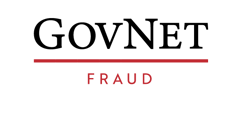In the intricate landscape of public sector procurement, the specter of fraud lurks ominously. Procurement fraud, with its myriad guises and deceptive stratagems, poses a significant threat to the integrity and efficiency of government operations. Understanding the anatomy of procurement fraud is paramount for safeguarding public funds and ensuring transparency in procurement processes.
The Landscape of Procurement Fraud
Procurement fraud encompasses a diverse array of schemes designed to manipulate and exploit the procurement process for personal gain. From bid rigging to collusion, perpetrators employ various tactics to circumvent controls and deceive authorities. Despite efforts to curb fraudulent activities, the evolving nature of procurement fraud demands vigilance and proactive measures to detect and prevent malfeasance.
Common Schemes
1. Bid Rigging:
Bid rigging involves collusive practices among suppliers to manipulate the bidding process and secure contracts at inflated prices. Common tactics include bid suppression, rotation, and market allocation, effectively stifling competition and distorting market dynamics.
2. Invoice Fraud:
Invoice fraud entails the submission of false or inflated invoices for goods or services not rendered. Perpetrators exploit loopholes in procurement systems to generate fictitious invoices or inflate costs, diverting funds to illicit channels undetected.
3. Kickbacks and Bribery:
Kickbacks and bribery schemes involve the exchange of favours or payments to influence procurement decisions in favour of specific vendors. Perpetrators offer bribes or kickbacks to procurement officials or decision-makers in exchange for preferential treatment, compromising the integrity of the procurement process.
4. False Claims:
False claims fraud involves the submission of fraudulent claims for reimbursement or payment under government contracts. Perpetrators fabricate documentation or misrepresent information to obtain payments for goods or services not delivered as specified, defrauding government agencies and taxpayers.
Red Flags
1. Unusual Bidding Patterns:
Unusual bidding patterns, such as consistently high or identical bids from suppliers, may indicate collusion or bid manipulation. Discrepancies in bid amounts or deviations from established norms warrant scrutiny and further investigation.
2. Lack of Competitive Tenders:
A lack of competitive tenders or limited participation in procurement processes may signal anti-competitive behaviour or bid rigging. Limited competition reduces transparency and increases the risk of collusion, necessitating enhanced oversight and due diligence.
3. Unexplained Cost Increases:
Unexplained cost increases or discrepancies between estimated and actual costs should raise concerns regarding potential invoice fraud or overbilling. Discrepancies in pricing or sudden spikes in costs without justification warrant closer examination to ascertain the validity of expenses.
4. Conflicts of Interest:
Conflicts of interest involving procurement officials or contractors present inherent risks of bias and favouritism. Instances where procurement decisions benefit individuals or entities with personal or financial ties to decision-makers should be investigated to prevent undue influence and ensure impartiality.
Conclusion
Procurement fraud represents a significant challenge for public sector organisations, threatening the integrity and credibility of procurement processes. By understanding the common schemes and red flags associated with procurement fraud, government agencies can bolster their defences and mitigate the risk of financial loss and reputational damage. Vigilance, transparency, and robust controls are essential components of an effective anti-fraud strategy, safeguarding public funds and upholding the principles of accountability and probity in government procurement.

Nicole Lummis
After a career in Project Management, I realised how important it was for me to pursue a career with a more creative career path. I have a passion for creating engaging digital content whether through written content or the use of image, graphics or videos.



